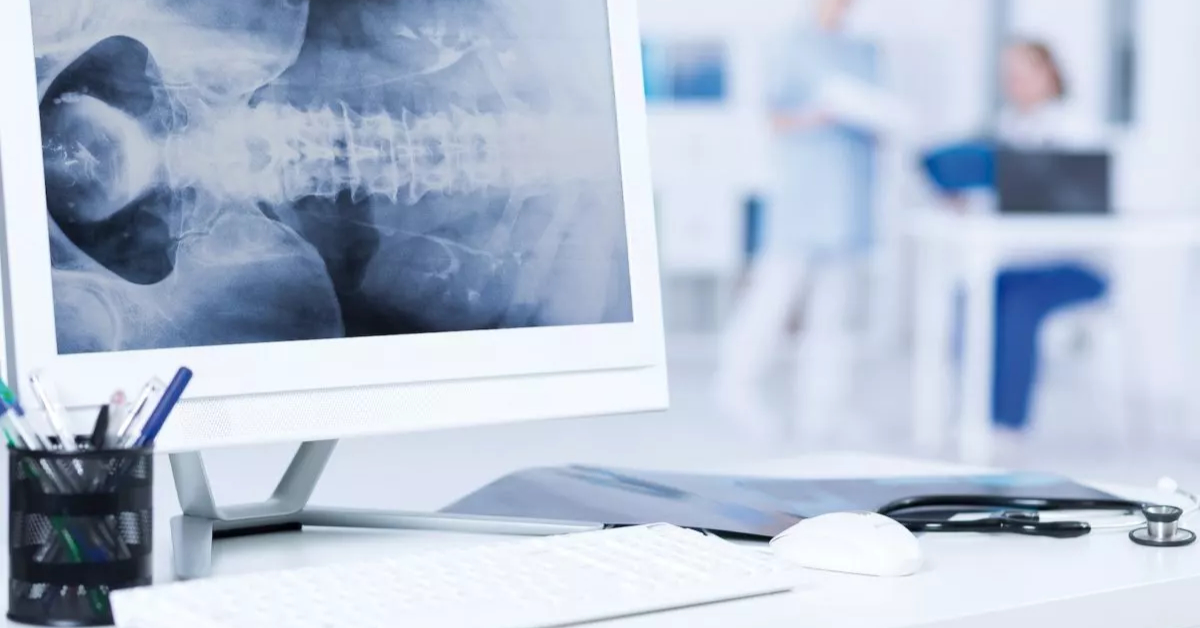
Interventional diagnostics: accurate detection of the source of pain
Pain is a subjective sensation which signals that something is wrong in the body. Although it is perceived mostly in a negative sense, one must keep in mind that its character is essentially protective. For therapy to be effective, it is crucial to know the cause of the pain and find its source.
Back and musculoskeletal pain requires the earliest possible start towards its elimination. This is most often a task for the patient in collaboration with a physiotherapist, with whom they work to optimise movement stereotypes, balance individual muscle groups and introduce varied exercise into daily life. However, this procedure cannot be applied to some patients, especially if they are in immense pain. In others, structural changes may be present that cannot be addressed by physiotherapy, and which may lead to the worsening or recurrence of pain rather than prevention. In these cases, it is necessary to find the source (generator) of the pain and a method of influencing it effectively. This is the essence of interventional pain diagnosis, which consists in the application of certain examination methods. Subsequent interventional therapeutic procedures specifically designed to treat painful conditions bring relief to patients by reducing, alleviating or eliminating pain for a higher quality and more satisfying life.
We seek the source of pain
In the case of spinal pain, interventional diagnosis focuses on the sources of pain, such as the discs, nerve roots, intervertebral (facet) joints, SI joint, and other anatomical structures. For this purpose, various types of ‘diagnostic-prognostic’ procedures in the form of targeted navigated blockades are used.
If interventional pain procedures (minimally invasive and endoscopic methods) are evaluated as a suitable solution for your back pain problem, consultation with an interventional specialist follows. The physician will determine your medical history, assess your current health, perform a clinical examination and evaluate the results of imaging methods - ideally the most recent magnetic resonance imaging (MRI) or CT scan of your spine and other medical records. The physician then determines the next course of action, respectively treatment plan.
After pinpointing the likely sources of pain based on clinical assessment, the physician proceeds to perform an interventional test - diagnostic blockade to determine the source of pain. The test is performed by injection with a needle, where a local anaesthetic is injected into the structures under the targeted control of an X-ray machine (C-arm) or ultrasound. This focus allows us to see very accurately whether we’ve “hit the spot” and to apply the drug exactly where it is needed. If the patient experiences pain relief, we know that this particular joint, root, disc or other structure is the one contributing significantly to the current intensity of pain. The physician then considers, according to the established clinical algorithm, the next most effective and gentle therapeutic procedure to treat the structures in question, leading to longer-term pain relief or elimination.
Diagnostic procedures can offer immediate relief
Diagnostic procedures are performed on an outpatient basis in the operating theatre, under local anaesthesia and lasting 15 to 20 minutes. No special preparation is required for such intervention. You should expect to be lying on your stomach to offer the best access to the spine (we recommend a lighter meal before the appointment) with your back exposed. After injection, the injection site will be treated and checked for correct placement of the drug under the X-ray C-arm or ultrasound. The procedure is not painful except for a small pinprick. The patient may sometimes experience slight pain or pressure, but this will subside. Some of the procedures may relieve pain for a longer period of time, but this is usually not the primary goal of application - in the first phase, it is chiefly diagnostic.
Are you interested in the possibility of solving your back pain with interventional treatment? Would you like to know whether it might be suitable for you?